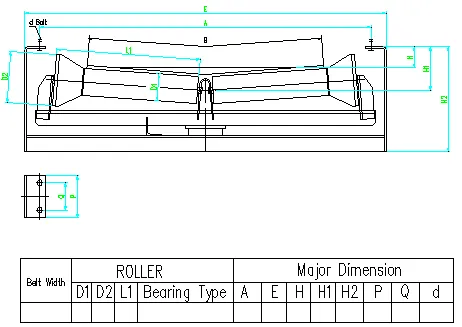 Afrikaans
Afrikaans  Albanian
Albanian  Amharic
Amharic  Arabic
Arabic  Armenian
Armenian  Azerbaijani
Azerbaijani  Basque
Basque  Belarusian
Belarusian  Bengali
Bengali  Bosnian
Bosnian  Bulgarian
Bulgarian  Catalan
Catalan  Cebuano
Cebuano  Corsican
Corsican  Croatian
Croatian  Czech
Czech  Danish
Danish  Dutch
Dutch  English
English  Esperanto
Esperanto  Estonian
Estonian  Finnish
Finnish  French
French  Frisian
Frisian  Galician
Galician  Georgian
Georgian  German
German  Greek
Greek  Gujarati
Gujarati  Haitian Creole
Haitian Creole  hausa
hausa  hawaiian
hawaiian  Hebrew
Hebrew  Hindi
Hindi  Miao
Miao  Hungarian
Hungarian  Icelandic
Icelandic  igbo
igbo  Indonesian
Indonesian  irish
irish  Italian
Italian  Japanese
Japanese  Javanese
Javanese  Kannada
Kannada  kazakh
kazakh  Khmer
Khmer  Rwandese
Rwandese  Korean
Korean  Kurdish
Kurdish  Kyrgyz
Kyrgyz  Lao
Lao  Latin
Latin  Latvian
Latvian  Lithuanian
Lithuanian  Luxembourgish
Luxembourgish  Macedonian
Macedonian  Malgashi
Malgashi  Malay
Malay  Malayalam
Malayalam  Maltese
Maltese  Maori
Maori  Marathi
Marathi  Mongolian
Mongolian  Myanmar
Myanmar  Nepali
Nepali  Norwegian
Norwegian  Norwegian
Norwegian  Occitan
Occitan  Pashto
Pashto  Persian
Persian  Polish
Polish  Portuguese
Portuguese  Punjabi
Punjabi  Romanian
Romanian  Russian
Russian  Samoan
Samoan  Scottish Gaelic
Scottish Gaelic  Serbian
Serbian  Sesotho
Sesotho  Shona
Shona  Sindhi
Sindhi  Sinhala
Sinhala  Slovak
Slovak  Slovenian
Slovenian  Somali
Somali  Spanish
Spanish  Sundanese
Sundanese  Swahili
Swahili  Swedish
Swedish  Tagalog
Tagalog  Tajik
Tajik  Tamil
Tamil  Tatar
Tatar  Telugu
Telugu  Thai
Thai  Turkish
Turkish  Turkmen
Turkmen  Ukrainian
Ukrainian  Urdu
Urdu  Uighur
Uighur  Uzbek
Uzbek  Vietnamese
Vietnamese  Welsh
Welsh  Bantu
Bantu  Yiddish
Yiddish  Yoruba
Yoruba  Zulu
Zulu Types and Applications of Conveyor Roller Idlers in Material Handling Systems
Understanding Conveyor Roller Idlers Essential Components for Material Handling Systems
In the world of material handling, efficiency and reliability are paramount. One of the critical components that ensure smooth operation in various conveyor systems is the conveyor roller idler. These idlers play a significant role in supporting the conveyor belt, guiding materials along the production line, and reducing wear and tear on the equipment.
What are Conveyor Roller Idlers?
Conveyor roller idlers are cylindrical rollers mounted on frames or supports that form part of a conveyor system. They serve multiple purposes, primarily supporting the conveyor belt and the materials being transported. Typically made from steel or lightweight polymers, roller idlers can be designed to withstand the harsh environments often associated with material handling industries such as mining, agriculture, and manufacturing.
Types of Conveyor Roller Idlers
1. Impact Idlers These are specially designed to absorb the energy from heavy loads as they hit the conveyor belt. They usually feature rubber or spring-mounted rollers, which help minimize shock and prevent damage to the belt.
2. Return Idlers Located on the underside of the conveyor belt, return idlers support the belt as it returns to the loading point. These idlers are crucial for maintaining belt tension and alignment.
3. Crowned Idlers These idlers have a slight curvature that helps keep the conveyor belt centered. This design prevents the belt from drifting off the tracks, enhancing operational efficiency.
4. Training Idlers Also known as belt trainers, these idlers help adjust and stabilize the alignment of the belt during operation. Maintaining proper belt tracking is vital to prevent damage and ensure consistent material flow.
conveyor roller idler

Importance of Roller Idlers in Conveyor Systems
The functionality of roller idlers can significantly affect the overall performance of a conveyor system. Here are several key benefits
- Load Support Roller idlers assist in bearing the weight of the materials, thereby minimizing stress on the conveyor belt. This support prevents sagging and bending, which can lead to premature wear of the belt.
- Reduced Friction By providing a smooth rolling surface, roller idlers reduce friction between the belt and the underlying framework. This reduction in friction translates to lower energy consumption and wear on both the belt and the drive components.
- Belt Alignment Properly aligned roller idlers are essential for ensuring that the conveyor belt remains on its intended path. Misalignment can lead to increased wear and operational inefficiencies.
- Cost Efficiency High-quality roller idlers contribute to longer-lasting conveyor systems. By minimizing wear and tear on belts and reducing energy consumption, businesses can see significant cost savings over time.
Conclusion
Conveyor roller idlers are indispensable components of modern material handling systems. Their ability to support the conveyor belt, reduce friction, and ensure proper alignment makes them crucial for maintaining efficiency and reliability in various industries. Understanding the types and functions of roller idlers allows businesses to select the right components for their specific applications, ultimately leading to enhanced performance, reduced downtime, and improved operational efficiency. Whether in a mining operation, a manufacturing facility, or a logistics center, the importance of high-quality roller idlers cannot be overstated. As industries continue to evolve, so too will the technology surrounding these essential components, leading to even greater efficiencies in the future.
-
Revolutionizing Conveyor Reliability with Advanced Rubber Lagging PulleysNewsJul.22,2025
-
Powering Precision and Durability with Expert Manufacturers of Conveyor ComponentsNewsJul.22,2025
-
Optimizing Conveyor Systems with Advanced Conveyor AccessoriesNewsJul.22,2025
-
Maximize Conveyor Efficiency with Quality Conveyor Idler PulleysNewsJul.22,2025
-
Future-Proof Your Conveyor System with High-Performance Polyurethane RollerNewsJul.22,2025
-
Driving Efficiency Forward with Quality Idlers and RollersNewsJul.22,2025





























